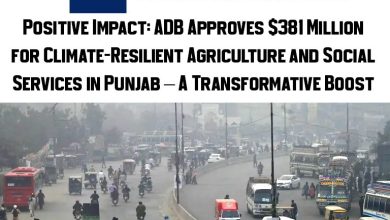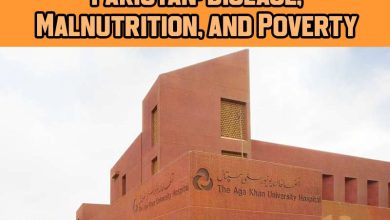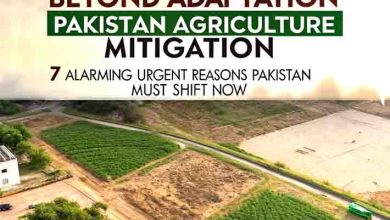USDA Warns of Wheat Crisis in Pakistan: 1.7 Million Tons May Be Imported
The USDA warns of a wheat crisis in Pakistan. Domestic production drops 13%, prompting a potential import of 1.7 million tons. Climate change & policy failings blamed.
In a major blow to national food security, Pakistan is facing a wheat crisis that may lead to the import of 1.7 million metric tons of wheat in 2025, according to a new report by the United States Department of Agriculture (USDA). The wheat crisis in Pakistan is unfolding due to a 13% drop in domestic wheat production, driven by environmental and policy-related challenges.
USDA Forecast: Sharp Drop in Domestic Wheat Production
The USDA’s April 2025 report projects that Pakistan’s wheat output for the 2025–2026 season will fall to 27.5 million tons, down from a record 31.5 million tons in 2024–2025. The wheat crisis in Pakistan is attributed to multiple factors:
-
A 7% reduction in cultivation area
-
Unusually dry weather since October 2024
-
Above-average temperatures during the growing season
This decline has sparked fears of domestic shortages, rising food prices, and a deeper economic crisis.
Why Is Wheat Production Declining in Pakistan?
The USDA report outlines several interconnected causes for the wheat crisis:
1. Shrinking Cultivation Area
Farmers are shifting from wheat to other crops such as rapeseed, pulses, and vegetables, citing higher profitability and lack of government support.
2. Abnormal Weather Patterns
The 2024–25 season experienced persistent drought-like conditions, with below-average rainfall and scorching heat across wheat-producing provinces.
3. Lack of Incentives
The federal government’s refusal to set a wheat support price demotivated farmers. Without a guaranteed return, wheat is no longer a viable crop for many.
Impact of Climate Change and Water Infrastructure Deficiencies
The wheat crisis in Pakistan highlights deeper systemic issues, especially the role of climate change and decaying infrastructure.
-
No major water reservoirs have been built in decades.
-
Inter-provincial disputes between Punjab and Sindh continue to block irrigation improvements.
-
Irrigation canals are poorly maintained and leak substantial water, wasting precious resources.
According to the USDA, these water management issues exacerbate the effects of climate change, making Pakistan’s agriculture more vulnerable.
Policy Gaps Worsening the Crisis
Government inaction and misaligned policies are at the heart of the current crisis:
-
No wheat procurement at support prices has left farmers exposed to market fluctuations.
-
Lack of climate-smart agriculture policies or crop insurance mechanisms
-
Bureaucratic gridlock has delayed critical reforms in the water and agriculture sectors.
These failures not only led to decreased production but also contributed to food insecurity and farmer dissatisfaction.
How Much Wheat Will Be Imported?
To bridge the supply gap, Pakistan may have to import up to 1.7 million tons of wheat, the USDA notes.
This will:
-
Add pressure on foreign exchange reserves
-
Increase the cost of food subsidies
-
Potentially trigger a wheat flour price hike, affecting millions of low-income households
According to local economists, the cost of imports could exceed $700 million, depending on global wheat prices and transport logistics.
Implications for Food Security & Inflation
The wheat crisis is more than a farming issue—it has far-reaching consequences for the entire economy:
-
Rising flour prices could stoke food inflation, already hovering near 25% year-on-year.
-
Urban and rural poverty rates may surge due to unaffordable food staples.
-
Social unrest could erupt in vulnerable areas, especially where wheat is a dietary mainstay.
Steps Pakistan Must Take Now
To mitigate the current crisis and prevent future occurrences, experts suggest the following actions:
Short-Term Solutions
-
Immediate import agreements with countries like Russia, Ukraine, or Kazakhstan
-
Subsidize wheat flour for low-income households
-
Support farmers with cash incentives or input subsidies
Long-Term Reforms
-
Build new water reservoirs and rehabilitate irrigation systems
-
Introduce climate-resilient wheat varieties
-
Implement price support mechanisms to stabilize farm incomes
-
Foster public-private partnerships for smarter agriculture
Conclusion: A Wake-Up Call for Pakistan
The wheat crisis in Pakistan, as highlighted by the USDA, is a national emergency in the making. While climate factors are beyond control, policy inaction and mismanagement have amplified the damage. If not addressed with urgency and foresight, this situation could spiral into a full-scale food security crisis.
To learn more about Pakistan’s agricultural challenges, explore our article on Climate Change and Food Security in South Asia.
Related Reads:







